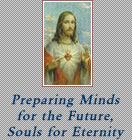|
Expository Text: Nonfiction literature, usually written to inform the reader about a topic. This is the type of text found in textbooks. Examples of expository text are your science textbook, social studies textbook, brochures for museums or cities, newspaper and magazine articles, and nonfiction books about animals, people, and outer space.
Expository elements:
- Topic - the focus of the text's information
- Main Ideas - the important subtopics that tell more about the topic, the "big picture" ideas
- Supporting Details - the specific, exact information that tells more about each main idea
Text elements often used in Expository Text:
- Titles - the name of the section or article. This usually tells you the topic of the text.
- Subtitles - section headings that break the text into distinct parts. These usually point out the main ideas of the text.
- Maps, charts, graphs, diagrams, and photographs - these visual (or graphic) elements give additional information about the topic, and help you to "see" information.
- Captions - the sentences that accompany a photograph or other visual element. These explain what you are seeing, and often give additional details that are not found in the written text of the article or section.
Skills to focus on with Expository Text:
- Locating main ideas and supporting details.
- In many expository texts, main ideas are found as subheadings/section headings that are in a different color or letter style from the rest of the text.
- Supporting details are found within the regular text and tell more information about the main ideas.
- Summarizing an expository passage.
- Usually, a summary would begin with a sentence identifying the topic of the text and its focus. (For example: This passage focused on the history of chocolate and the way it is manufactured today.)
- Your summary should then state the main ideas of the expository passage, along with a few of the more important details that support each main idea. (For example: Chocolate was first used by the ancient people of South America. It was so rare and difficult to come by that only royalty and religious leaders were allowed to have chocolate. They made the cocoa beans into a bitter drink, which they used in special ceremonies. Later, cocoa beans were brought to Europe. At first, it was only available to the richer people because it was a rare treat. As time went on, chocolate became more popular and less expensive. Today, there are many chocolate manufacturers around the world. Switzerland is famous for its gourmet chocolates. In the United States, the Hershey company, located in Pennsylvania, manufactures large quantities of chocolate candies. Russell Stover, originating in Kansas, is a famous American hand-dipped chocolatier.)
- Your summary should end with a conclusion that ties your ideas together; this often is a restatement of your introduction sentence, or can be a personal opinion or thought about the information you read. (For example: Chocolate has been around for many years, and is popular around the world. Or you might say: I really enjoy eating chocolate, just like the ancient rulers of South America.)
- Expository text often includes the 5W's an H: Who, What (happened), When, Where, Why, and How. News articles, especially, use these elements. You can also identify the 5 W's and H to write a summary of an expository piece.
- Using graphic elements (photographs, maps, diagrams, graphs, pictures, etc.) to better understand the text or to gain additional information.
- Identifying the text structure that is used within the expository passage.
- sequence
- problem/solution
- compare/contrast
- description
- cause/effect
- Identifying topic and summary sentences within paragraphs or for the entire passage.
Return to Text Types Index.
|
|



